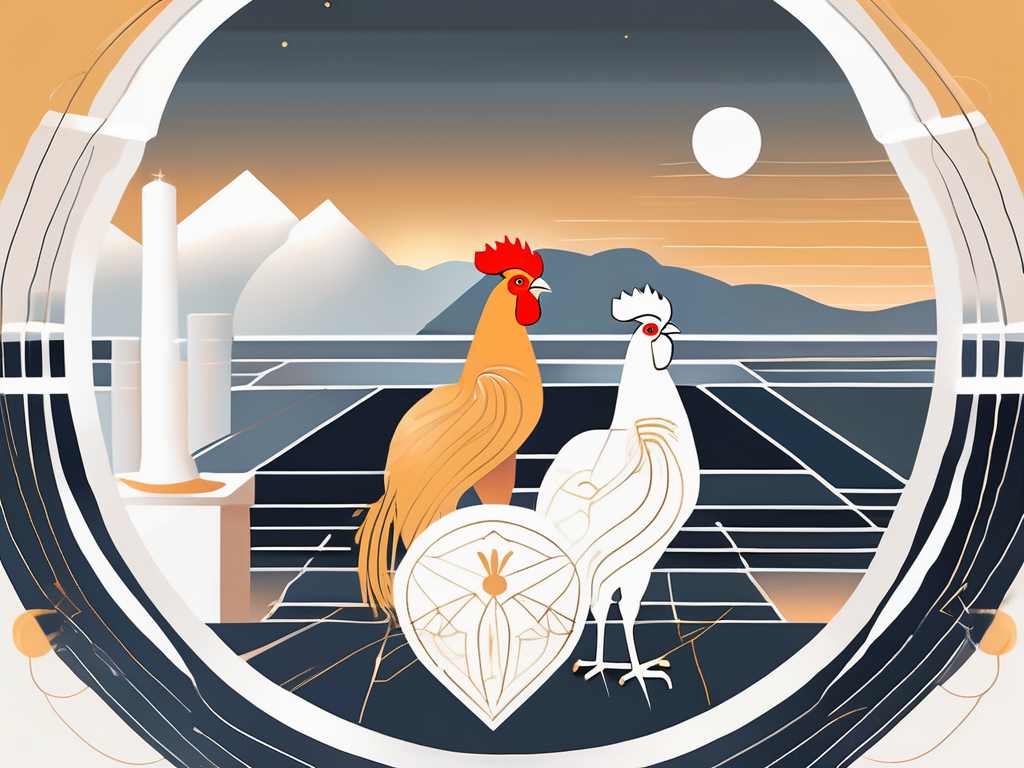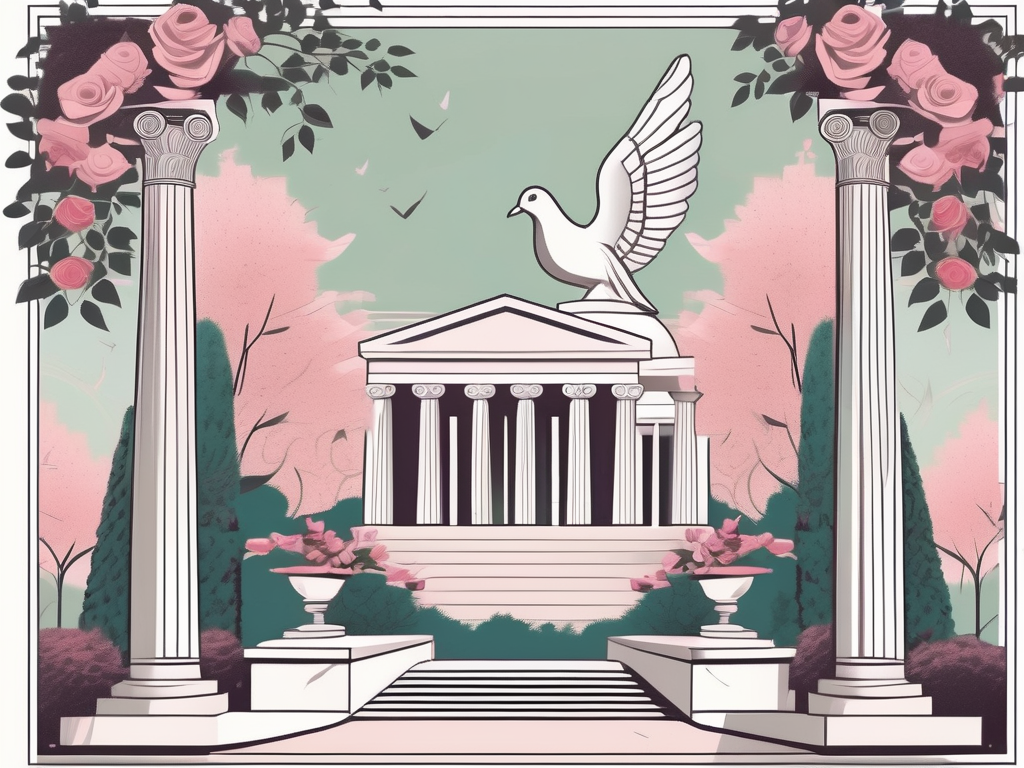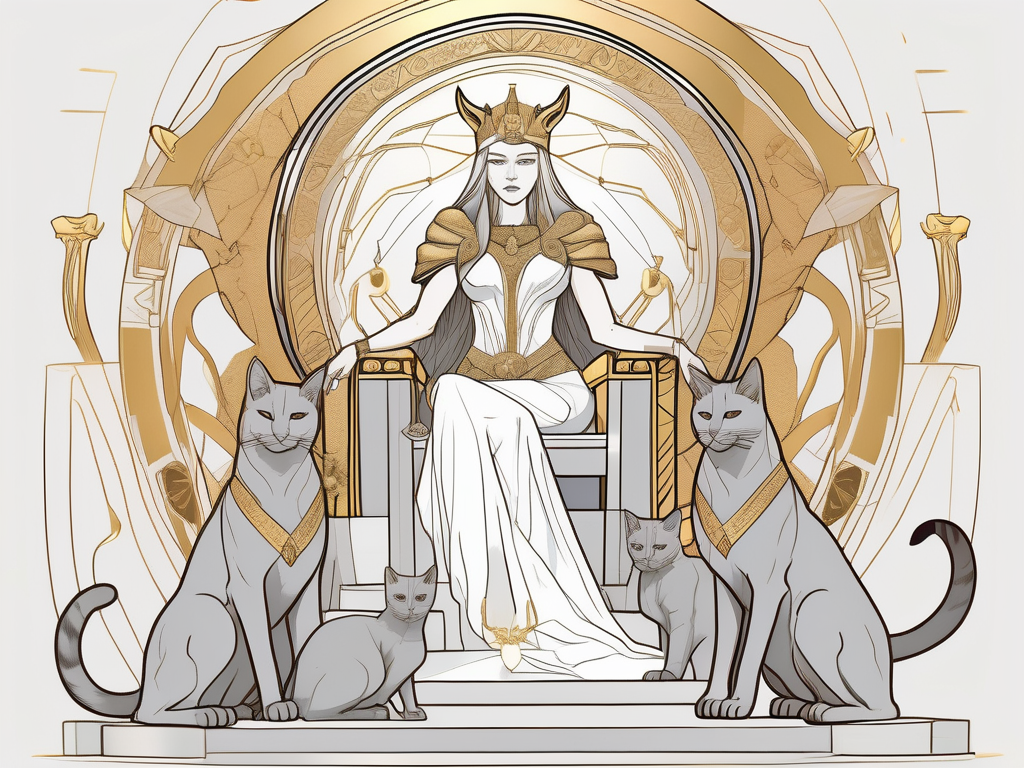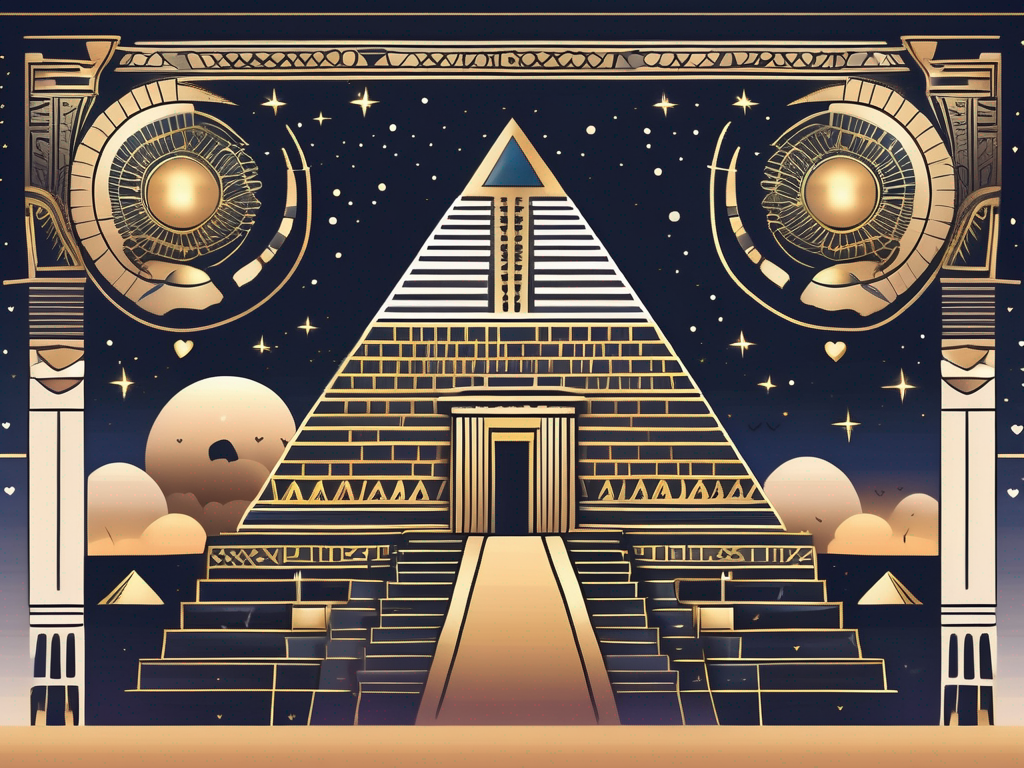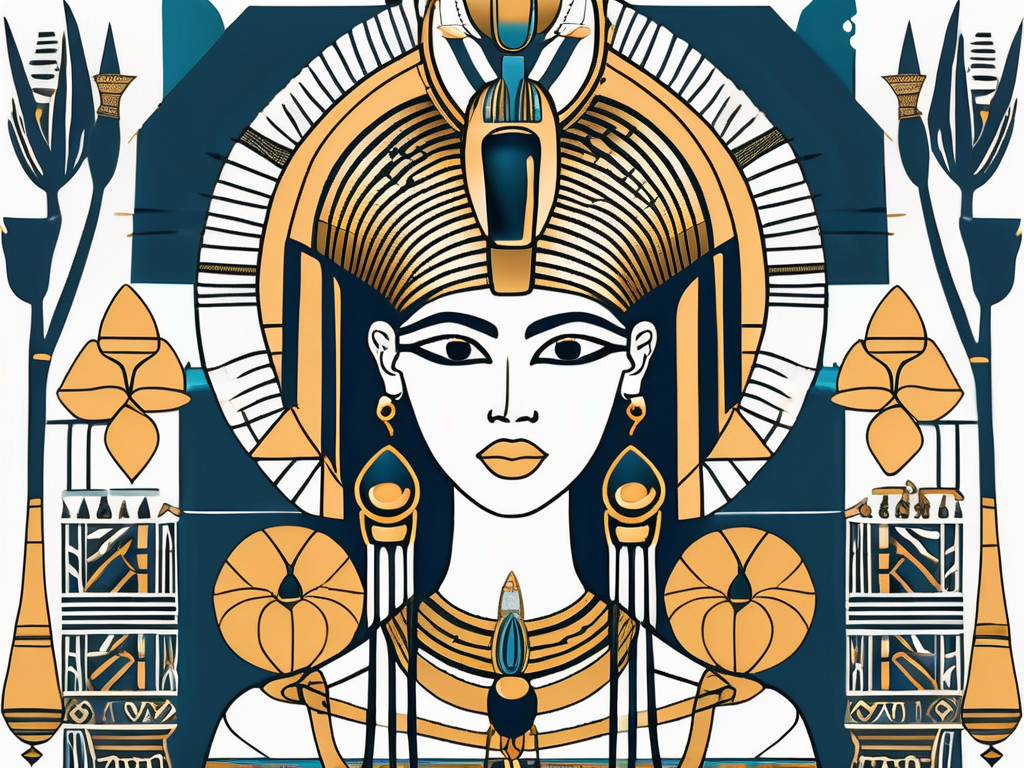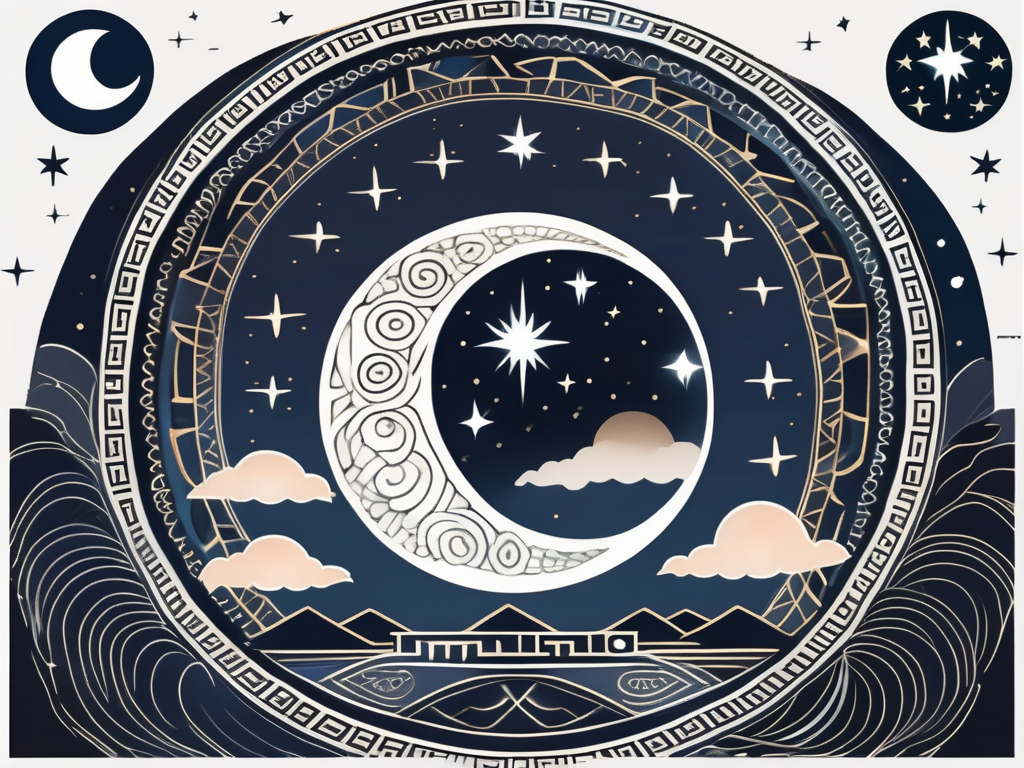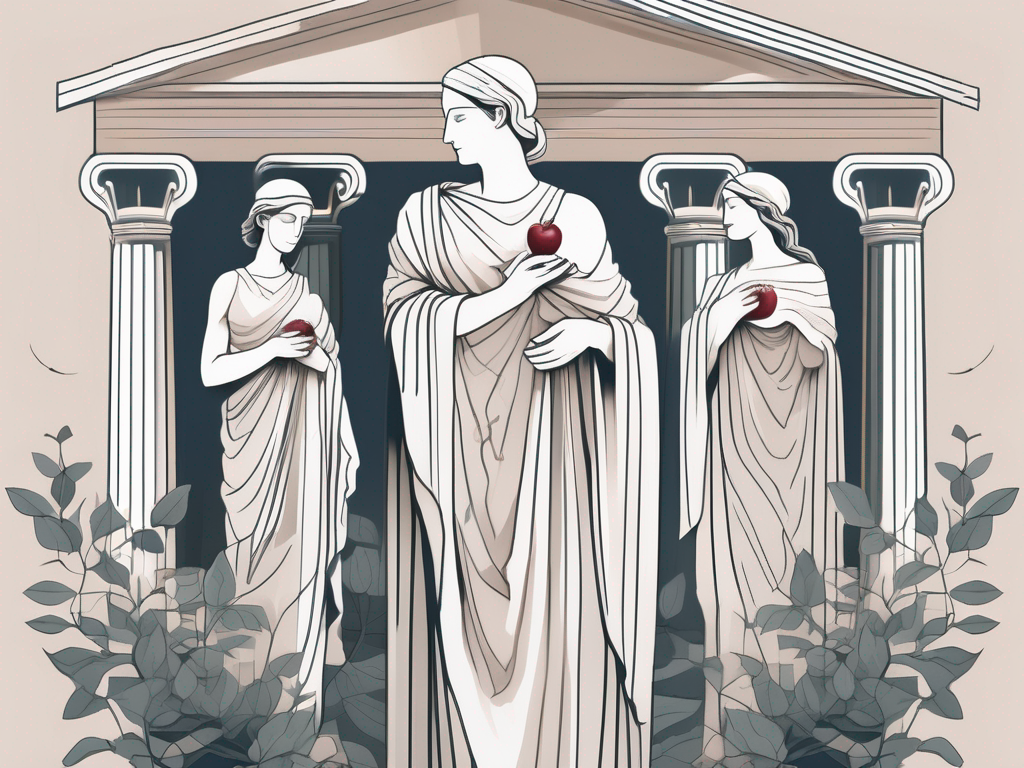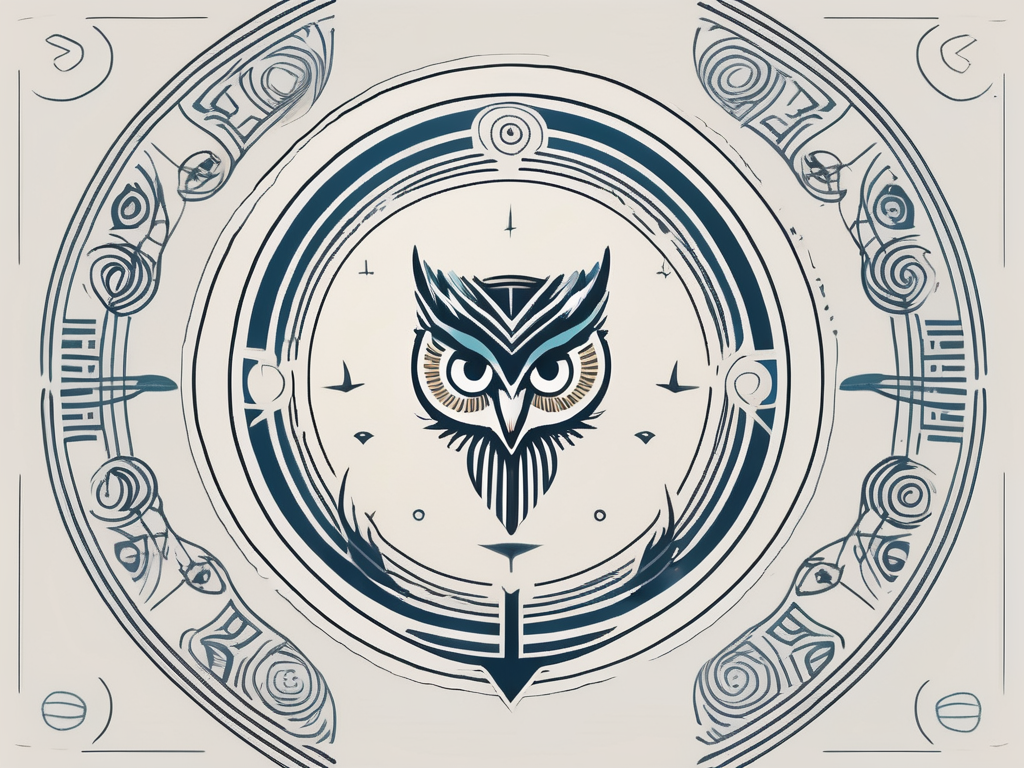In ancient Greek mythology, Eos was a revered goddess associated with the dawn. Her graceful presence and radiant beauty made her an enchanting figure in Greek folklore. Let’s dive into the captivating world of Eos, understanding her role in mythology, exploring her symbolism, delving into her love affairs and children, examining her presence in Greek literature and philosophy, and finally, exploring her modern influence.
Understanding the Role of Eos in Greek Mythology
Eos was known as the personification of dawn, representing the break of day and the awakening of the world. In Greek mythology, she had a pivotal role in starting a new day, bringing light and warmth to the earth. This celestial goddess was revered as the embodiment of hope, renewal, and the beginning of new possibilities.
The Birth and Lineage of Eos
According to ancient Greek legends, Eos was born to the Titans Hyperion and Theia, making her a second-generation Titan. Her siblings included Helios, the god of the sun, and Selene, the goddess of the moon. The lineage of Eos reflected her ethereal nature and connection to the celestial realm.
Eos’ birth was said to be a moment of great significance, as her arrival marked the beginning of a new era. As the daughter of Hyperion, the Titan of light, and Theia, the Titaness of sight, Eos inherited their divine qualities and became a powerful force in her own right. She embodied the radiance of the sun and the beauty of the moon, combining both celestial elements in her persona.
Legend has it that Eos was born with rosy fingers, a physical attribute that would later become synonymous with her depiction. Her delicate touch was said to bring forth the first rays of sunlight, gently caressing the earth and awakening all living beings from their slumber. This gentle touch symbolized the hope and renewal that Eos brought with her every morning.
Eos and the Start of a New Day
Eos had a significant role to play in Greek mythology. Each day, she would leave her home at the edge of the world and embark on a journey across the sky, heralding the arrival of the sun. With her rosy fingers, she would open the gates of heaven, allowing Helios’ chariot to ascend into the sky, painting it with vibrant colors and illuminating the world.
As Eos traveled across the sky, she would scatter dewdrops on the earth, symbolizing the tears of joy shed by the world upon her arrival. These dewdrops were believed to possess magical properties, bringing fertility and abundance to the land. Farmers and gardeners would eagerly await the touch of Eos, knowing that her presence would bless their crops and ensure a bountiful harvest.
But Eos’ role extended beyond the physical realm. She was also associated with the awakening of the human spirit and the birth of new ideas. It was believed that when Eos appeared, inspiration would strike poets, artists, and thinkers, filling them with creativity and guiding them towards new discoveries. Her radiant presence was seen as a catalyst for innovation and intellectual growth.
Furthermore, Eos was often depicted as a compassionate and nurturing goddess. She was known to protect young children and guide them safely through the darkness of night. Her gentle touch would soothe their fears and bring them comfort, ensuring that they would wake up to a world filled with light and possibilities.
In conclusion, Eos played a vital role in Greek mythology as the personification of dawn. Her birth, lineage, and daily journey across the sky were all intertwined with the beginning of a new day and the awakening of the world. As a symbol of hope, renewal, and inspiration, Eos continues to captivate our imagination and remind us of the endless possibilities that each new day brings.
The Symbolism and Iconography of Eos
Eos’ presence went beyond her celestial duties. In ancient Greek art, she was often depicted as a young and beautiful woman, adorned with wings and a radiant halo. Her grace and elegance were captured in sculptures and paintings, symbolizing the majesty and power of the dawn.
As the goddess of the dawn, Eos held a significant place in Greek mythology. She was known for her role in bringing forth the morning light, heralding the arrival of a new day. Artists sought to capture the essence of her divine nature through their depictions, showcasing her ethereal beauty and celestial aura.
Eos in Ancient Greek Art
Ancient Greek artists portrayed Eos in various forms, emphasizing her celestial nature. She was often depicted alongside her siblings, Helios and Selene, forming a triad that represented the different aspects of the day. These artistic representations showcased Eos’ beauty, grace, and important role in Greek mythology.
In sculptures, Eos was often depicted with outstretched wings, symbolizing her ability to soar across the sky as she brought forth the dawn. Her flowing robes, delicately carved, conveyed a sense of movement and grace, capturing the moment just before the first rays of sunlight touched the earth.
Paintings of Eos often depicted her in vibrant colors, with a soft glow emanating from her figure. Artists used techniques such as chiaroscuro to create a sense of depth and luminosity, enhancing the divine qualities associated with the goddess of the dawn.
The Saffron Robe and Other Symbols
One of the key symbols associated with Eos was her saffron-colored robe. It was believed that she adorned herself in this vibrant garment each morning as she prepared to bring forth the dawn. The saffron robe symbolized her connection to light, warmth, and the beginning of a new day.
In addition to her robe, Eos was often depicted holding a torch or a golden cup, symbolizing her role as the bringer of light and the dispenser of the morning dew. These symbols further emphasized her association with the dawn and the renewal of life that came with each new day.
Artists also incorporated other elements into their depictions of Eos to enhance the symbolism and iconography surrounding her. Flowers, particularly roses and lilies, were often included in the background, representing the beauty and fragility of the natural world awakening with the dawn. Birds, such as larks and swallows, were sometimes shown flying alongside Eos, symbolizing the arrival of morning song and the beginning of a new day’s chorus.
Through their art, ancient Greek artists sought to capture the essence of Eos, the goddess of the dawn. Their depictions showcased her celestial nature, her beauty, and her important role in Greek mythology. From her saffron robe to the symbols of light and renewal, each detail added depth and meaning to the portrayal of this divine figure.
Eos’ Love Affairs and Children
Eos, like many other Greek gods and goddesses, had her fair share of love affairs and passionate encounters. These tales highlight her irresistible allure and the consequences of her intense romances.
The Mortal Lovers of Eos
Eos was notorious for falling in love with mortals. Her most famous mortal lover was Tithonus, a prince of Troy. She loved him so deeply that she asked Zeus to grant him immortality. However, she forgot to ask for eternal youth, and as a result, Tithonus was cursed to age endlessly, becoming a withered old man. This tragic tale serves as a cautionary reminder of the importance of considering all aspects when making requests of the gods.
The Divine Offspring of Eos
Eos also had divine offspring, born from her union with the gods. One of her most well-known children was Memnon, a hero and king who fought in the Trojan War. Memnon’s bravery and skill in battle made him a revered figure, and his mother’s blessing bestowed upon him added to his legendary status.
Eos in Greek Literature and Philosophy
Eos’ influence extended beyond mythology and into the realm of literature and philosophy, where she became a source of inspiration and interpretation.
Eos in Homer’s Epic Poems
In Homer’s epic poems, the Iliad and the Odyssey, Eos made several appearances. She was often depicted as a compassionate goddess, aiding heroes and providing comfort in times of need. Her gentle touch and silky embrace brought solace to those embarking on dangerous journeys or engaged in fierce battles.
Philosophical Interpretations of Eos
Philosophers, too, pondered upon Eos and used her as a metaphor for various concepts. The rising of the sun each morning represented the triumph of knowledge over ignorance, the birth of reason and enlightenment. Eos’ journey across the sky symbolized the constant pursuit of truth and understanding.
The Modern Influence of Eos
Eos, despite originating from ancient Greek mythology, continues to resonate in contemporary culture and science.
Eos in Contemporary Culture
In modern culture, Eos has become an emblem of beauty, grace, and new beginnings. Her name often finds its way into literary works, music, and even brand names. She symbolizes the eternal hope of a fresh start, inspiring individuals to embrace the possibilities that each new day brings.
Eos in Astronomy and Space Exploration
Even the realm of astronomy has paid tribute to Eos. A moon of the planet Jupiter was named after her, reflecting the mythology surrounding the goddess of dawn. Additionally, the presence of sunlight on various celestial bodies serves as a reminder of Eos’ eternal influence.
Indeed, Eos remains an enduring figure in Greek mythology and beyond. Her graceful presence at the break of dawn symbolizes the beginning of new possibilities, the triumph of light over darkness. Whether in ancient art, literature, philosophy, or contemporary culture, Eos continues to inspire and captivate, reminding us of the beauty and magic that await with the start of each new day.
